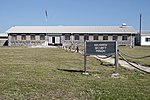Melkbosstrand

Melkbosstrand (Afrikaans for "Milkbush beach") is a coastal town located on the South West Coast of South Africa, 30 km north of Cape Town. It forms part of the City of Cape Town Metropolitan Municipality, the municipality governing Cape Town and its greater metropolitan area. Named after the species of Euphorbiaceae bushes which grow on the dunes and give off a milky latexlike substance, it is commonly referred to simply as Melkbos. The town and its 7 kilometre stretch of white sand beach is situated on the Atlantic coast with the Blouberg mountain to the east. The beach is popular with surfers. It is one of the landing points for the South Africa-Far East, South Atlantic/West Africa and Equinao submarine cable systems. Melkbosstrand is along the Blaauwberg region of the City of Cape Town within which it became incorporated when metropolitan boundaries were redrawn, following the advent of democracy in 1994. Its nearest neighbouring towns are Bloubergstrand to the south and Atlantis to the north-east. Melkbos is protected from urban development owing to its location in an expansive nature conservation zone to the South, insulating it from the Bloubergstrand sprawl, and the security buffer zones of Koeberg nuclear power station to the North and today it remains a pristine seaside resort.
Excerpt from the Wikipedia article Melkbosstrand (License: CC BY-SA 3.0, Authors, Images).Melkbosstrand
Livingsea Close,
Geographical coordinates (GPS) Address Nearby Places Show on map
Geographical coordinates (GPS)
| Latitude | Longitude |
|---|---|
| N -33.733333333333 ° | E 18.433333333333 ° |
Address
Bontkop B&B
Livingsea Close
, Cape Town Ward 23
Western Cape, South Africa
Open on Google Maps







